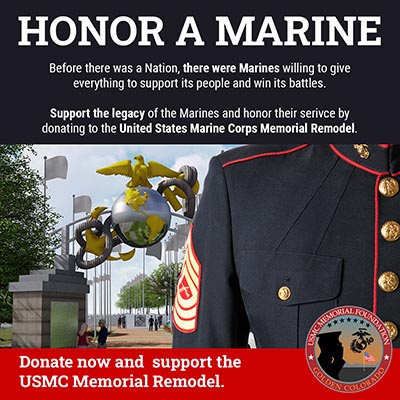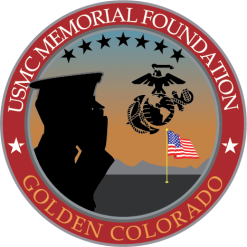Arthur Hipp, WWII Marine
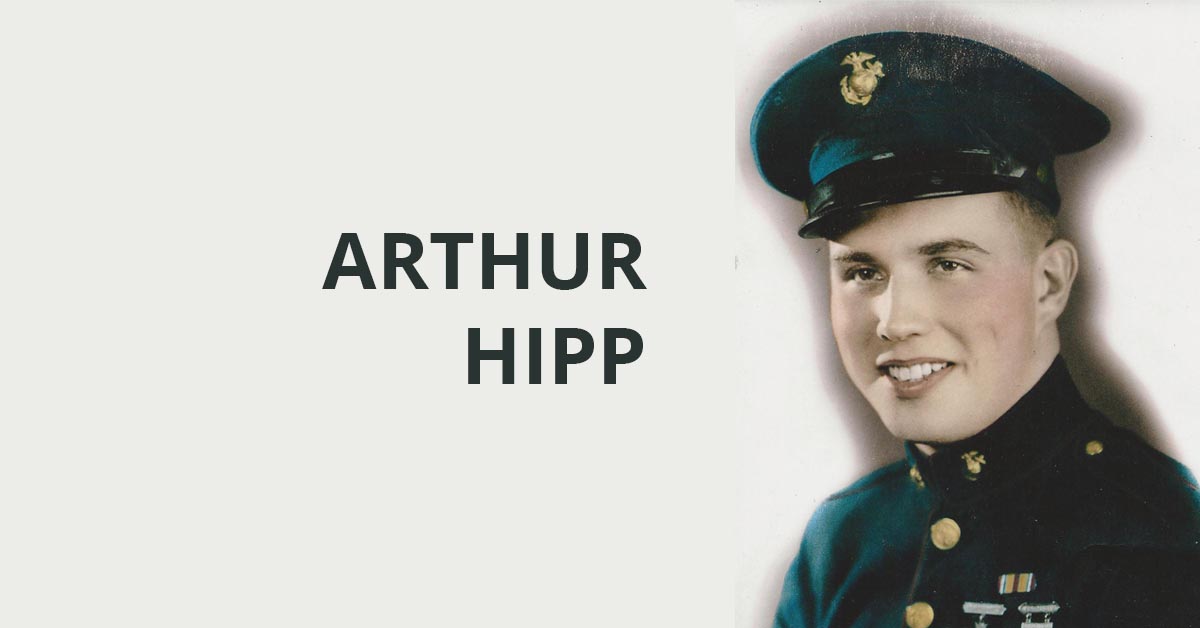
It has been almost seven years since founding editor, long time PLSC treasurer, and Side Shots originator Art Hipp passed away. Most every Professional Land Surveyor in the Rocky Mountain Region knows the land surveying legacy Art’s name commands. But for the newer members of our profession, I would like to point out some of the sacrifices Art made–and the courage he was able to muster–as a young 19 year old United States Marine in 1945.
I first met Art Hipp at Metropolitan State College in 1976. He was teaching Boundary Law and Land Surveying Principles two or three nights a week. I felt honored to be learning from such an unassuming and eloquent man. He made every point of the complex Land Law crystal clear. Art patiently helped many of us young baby boomers become well informed Professional Land Surveyors by channeling all of his experience and knowledge into simple classroom discussion. He also provided wonderful typewritten hand-outs that we used as a study guide to prepare for the LS test. During this time as one of his students, I learned Art was also in the United States Marine Corps and served in WWII. Having also served in the Marines, in a different war, I gained a dual admiration for Art Hipp.
When Art passed away, like many land surveyors, I attended Art’s funeral in September 2007. At the service I noticed several men with USMC lapel pins and struck up a conversation with them. One of the Marines I met that day was Robert L. Fischer, Colonel USMC (Retired).
Art belonged to an Arvada, Colorado Marine Veteran’s Group called Cooper’s Troopers. When I told Art’s Marine buddies I also was in the Marines and had served in Vietnam, Bob Fischer graciously invited me to attend their monthly meetings. To phrase Bob’s exact words, he said, “Please come to our luncheon meetings, Dean, I also served in Nam. At Cooper’s Troopers, these World War II guys actually tolerate us Vietnam Vets.” Bob Fischer’s words really appealed to me, and I’ve been enjoying the luncheon meetings with Art’s peers ever since.
At the Cooper’s Troopers meetings, I learned that Bob Fischer took it upon himself to interview all the willing WWII Marine Veterans of the luncheon group, and put his findings in a book, Voices of the Corps. In his book is a one page bio on Art Hipp. I now feel compelled to write what I’ve learned about Art’s Honorable Service in the United States Marine Corps.
OKINAWA - APRIL FOOL’S DAY/EASTER SUNDAY, 1945
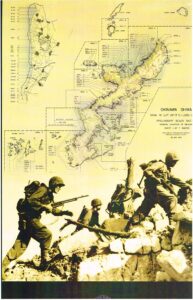 Art was standing on decks, waiting to disembark in Higgins landing boats with hundreds of his Marine brothers around him. Art was in awe, watching the pounding guns of the USS New Mexico battleship and hundreds of other ships and airplanes, softening up the beachhead and surrounding volcanic mountains. One of the more seasoned Marines in the group might have said to him, “In January of this year the kamikaze attacks destroyed her bridge, and killed the Captain of the New Mexico, in the Battle for Luzon, Philippines.” All the Marines must have been happy to see the battleship back from Pearl Harbor, where repairs to her bridge were made. Little did Art know then, but in a little over a month, he will personally witness more kamikaze attacks on the New Mexico, [1] and this time devastating strikes will kill 58 and wound 119 of her crew.
Art was standing on decks, waiting to disembark in Higgins landing boats with hundreds of his Marine brothers around him. Art was in awe, watching the pounding guns of the USS New Mexico battleship and hundreds of other ships and airplanes, softening up the beachhead and surrounding volcanic mountains. One of the more seasoned Marines in the group might have said to him, “In January of this year the kamikaze attacks destroyed her bridge, and killed the Captain of the New Mexico, in the Battle for Luzon, Philippines.” All the Marines must have been happy to see the battleship back from Pearl Harbor, where repairs to her bridge were made. Little did Art know then, but in a little over a month, he will personally witness more kamikaze attacks on the New Mexico, [1] and this time devastating strikes will kill 58 and wound 119 of her crew.
On this particular April Fool’s Day, Art is part of the largest island battle of World War II. The amphibious landing currently in progress involves 182,000 Army and 81,000[2] combat ready Marines. Imagine this force of Army and Marines filling six National Football League stadiums, then letting them all out at once, with each person carrying a 60 pound pack and weapon. With jeeps, trucks, tanks, accompanied with a month’s provisions of ammo, food, and fuel. To assist this contingent known as the 10th U.S. Army, all these materials were being unloaded from hundreds of ships and placed on a beach about 7 miles in breadth.
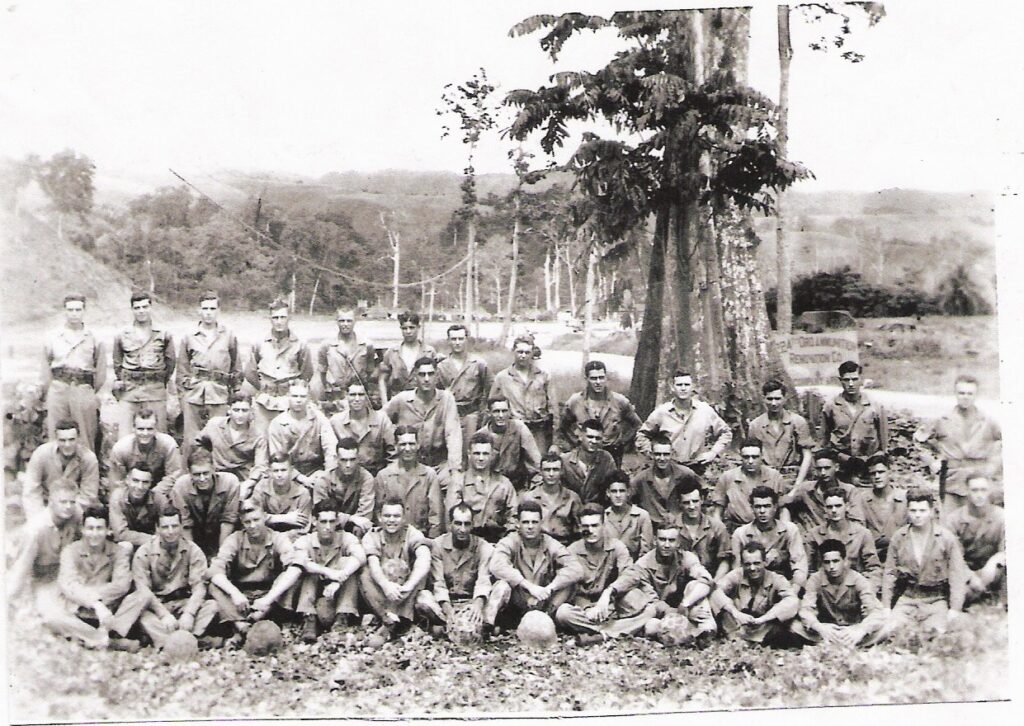
Art’s unit, “E” Company, of the 2nd Battalion, of the 29th Marine Regiment, was part of the newly formed 6th Marine Division. The 6th Marine Division (6th MAR DIV) made up about 10% of the total force being deployment on this Easter Sunday Morning. The 6th MAR DIV, Commanded by Major General Lemuel Shephard – USMC, was a mixture of combat seasoned Marines, and green Marines like Art.
The Pentagon decided to form and train the new 6th Marine Division in Guadalcanal over the previous five months to aid in the taking of Okinawa. With more Women Marines taking on the clerical and non-combat jobs back in the States, it freed up more able bodied men for overseas combat duties. Young Art Hipp was one of these men. As all Marines are first and primarily Riflemen, Art was also trained in Ordinance, and coupled with his infantry training, schooled in 60mm mortars. Upon being attached to the 6th MAR DIV, Art was designated Company Clerk and Company Runner for E Company.
The Battle of Okinawa has been called the largest sea-land-air battle in history. It is also the last battle of the Pacific War. Three months of desperate combat leave Okinawa a “vast field of mud, lead, decay, and maggots.” More than 100,000 Okinawan civilians perish, with over 72,000 American and 100,000 Japanese casualties. 2
The Pentagon’s further plans for the 6th MAR DIV was for it to be part of the force in the final ground invasion into the Japanese mainland. Many historians believe it was this horrific battle (with over ¼ million casualties) that convinced U.S. leaders to force Japan’s surrender with a nuclear strike, rather than invade its main island.[3] Therefore the 6th was the only Division in Marine Corps History to be formed and disbanded overseas, as after the Atomic Bombs, the mainland invasion was no longer necessary.
Art’s unit landed on Green Beach 2 with the first wave of Marines. There was light and sporadic enemy fire, as was the plan of Japan’s General Mitsuru Ushijima. But the following summary gives us a deeper perspective:
More mental health issues arose from the Battle of Okinawa than any other battle in the Pacific during World War II. The constant bombardment from artillery and mortars coupled with the high casualty rates led to a great deal of men coming down with combat fatigue. Additionally the rains caused mud that prevented tanks from moving and trucks from pulling out the dead, forcing Marines (who pride themselves on burying their dead in a proper and honorable manner) to leave their comrades where they lay. This, coupled with thousands of bodies both friend and foe littering the entire island, created a scent you could nearly taste. Morale was dangerously low by the month of May and the state of discipline on a moral basis had a new low barometer for acceptable behavior. The ruthless atrocities by the Japanese throughout the war had already brought on an altered behavior (deemed so by traditional standards) by many Americans resulting in the desecration of Japanese remains, but the Japanese tactic of using the Okinawan people as human shields brought about a new aspect of terror and torment to the psychological capacity of the Americans.[4]
Art was assigned as Company Clerk and Runner for E Company on Okinawa. I asked one of Art’s Cooper’s Troopers peers, Jim Blane, who had the same job description as Art during the battle of Iwo Jima. What were some of the jobs Art had to perform on Okinawa as Company Clerk & Runner? I asked. Jim replied, “Any stupid, nasty job that had to be done, Art would have to do it. From hauling ammo and medical supplies to fellow Marines pinned down, to retrieving bodies and body parts from the sea, in battle Marine Clerks filled in wherever necessary. Art would have to go any place where elements of his company needed him. His duties would change from day to day and from place to place.”
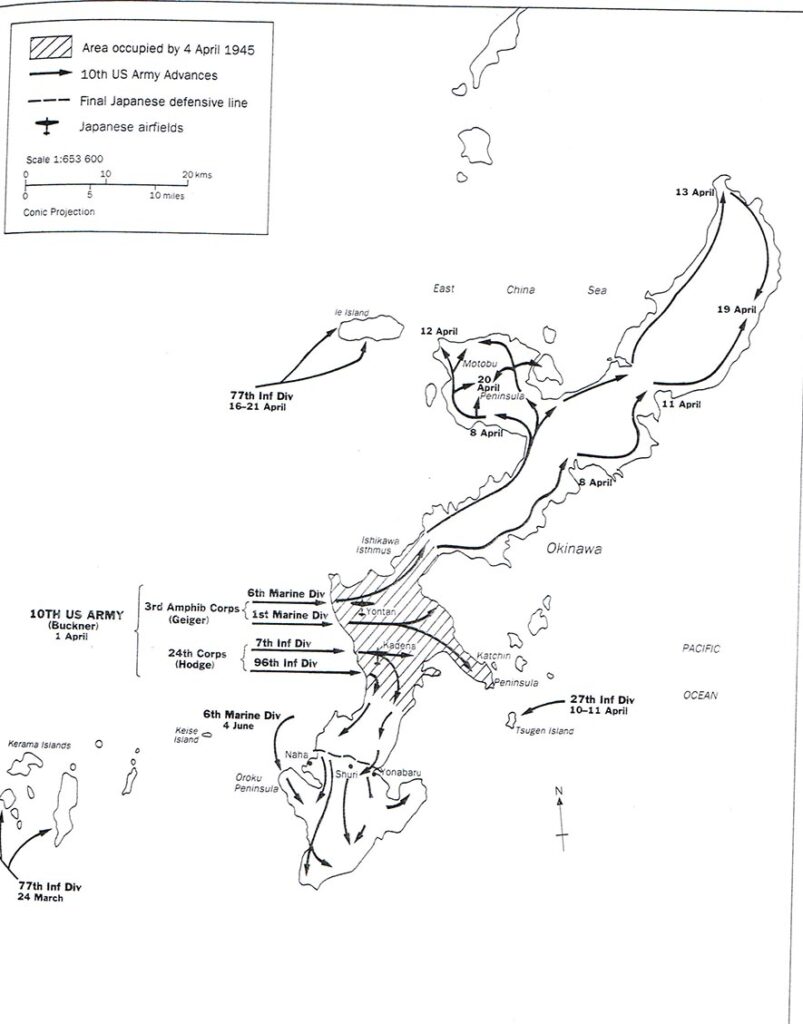
The map of Art’s movements (Figure 1), across Okinawa is my best guess based on information I have gathered from various sources. Corporal Hugh C. Lipsius, USMC, father of Cynthia Lipsius of Buffalo, NY, was in the 3rd Platoon, E Company, 2nd Battalion, 29th Marine Regiment, 6th Marine Division, (Same Company as Art). Cynthia assembled very detailed writings of her father’s movements during the battle. The following is a portion of a letter Cynthia provided written by her father Hugh Lipsius dated July 4, 1945:
I will give a brief resume of my stay here. We landed about 12:30 on April 1, 1945. On April 3rd we moved West of Yontan Airfield. On about the 6th of April we started to move North. We walked 30 miles in two days (whew). We had our first fight on the 12th. On the 15th we had the worst one of the Northern Campaign. The morning of the 16th our squad was sent on patrol. We were hit with mortar fire and returned to our C. P. (command post). We were sent out on another patrol and almost got trapped but managed to get out O.K. Our next battle was “Sugar Loaf Hill”. I can’t put into words to describe it, but most of the men in the cemetery were from that battle and also the hospitals. In the next one, I was hit and got back in time to come in on the Oroku Peninsula. Five days later, I was back in the hospital and got back here (to Okinawa) for the last 2 days (of the battle for Okinawa).[5]
Art was wounded at Oroku Village on June 14th and evacuated,[6] therefore he would have been involved in the second unprecedented shore to shore amphibious landing on June 4th. This was done to avoid the Japanese stronghold on the high ground dividing the southern portion of the island. The shore to shore landing surprised the Japanese and is credited with saving American lives. About a week after Art was wounded the Battle for Okinawa was all but won: Japanese General Ushijima refused a personal plea from the American General Simon Buckner to surrender. Instead, hearing the sounds of the systematic destruction of positions nearby on Hill 89, Ushijima and General Cho committed ritual suicide, each disemboweling himself with a short sword followed by his beheading by his principal aide.[7]
For his combat performance Art received the following commendation from his division commander: For gallantry in action and extraordinary achievement during operations against the enemy on Okinawa Shima from April 1st to June 21st, 1945, your courage was a constant source of inspiration to your associates, and your conduct throughout was in keeping with the highest traditions of the Naval Service”. LEMUEL SHEPHARD, MAJGEN – USMC.[8] (Commanding General 6th Marine Division,, Major General Shephard, was a veteran of the First World War, and would go on to become the 20th “Commandant of the Marine Corps – 4 star general “Top Marine” during the Korean War ).
The words by Lemuel Shepherd are evidence of Art’s high ethical standards, and his superior dedication to The Professional Land Surveyors of Colorado and probably all his lifetime duties and accomplishments. Semper Fidelis[9]. To Art Hipp, a mentor and Marine of the Greatest Generation.
Footnotes:
[1] 2001 Interview with Art Hipp, by Cooper’s Troopers Col. Robert Fischer USMC (Retired)
[2] Battle of Okinawa, by Ted Tsukiyama
[3]3Woodland’s Joe Casillas recalls battle for Okinawa on TV, By Larry Shapiro (Daily Democrat.com Woodland, CA)
[4]4 SSgt Rudy R. Frame, Jr. “Okinawa: The Final Great Battle of World War II | Marine Corps Gazette”. Mca-marines.org
[4]
[5]http://wwiletters.blogspot.com/2011/04wwii-letters-of-hugh-c-lipsius-of-e.html
[6] 2001 Interview with Art Hipp, by Cooper’s Troopers Col. Robert Fischer USMC (Retired)
[7] http://en.wikipedia.org/wiki/Mitsuru Ushijima
[8] 2001 Interview with Art Hipp, by Cooper’s Troopers Col. Robert Fischer USMC (Retired)
[9] Semper Fidelis distinguishes the Marine Corps bond from any other. It goes beyond teamwork—it is a brotherhood that can always be counted on. Latin for “always faithful,” Semper Fidelis became the Marine Corps motto in 1883. It guides Marines to remain faithful to the mission at hand, to each other, to the Corps and to country, no matter what. Becoming a Marine is a transformation that cannot be undone, and Semper Fidelis is a permanent reminder of that. Once made, a Marine will forever live by the ethics and values of the Corps.
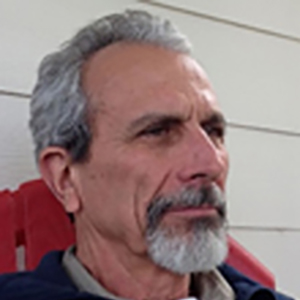
Dean Glorso
Dean Glorso served two years active duty in the United State Marine Corps, from May 1968 to April 1970, with one year service with the 1st Marine Aircraft Wing in DaNang, Vietnam. He finished his active duty as a Legal Clerk with Regimental Legal, Camp Pendleton, California. He received an Honorable Discharge for his 6-year military obligation in April 1974.
Dean is a semi-retired land surveyor, and owner/manager of Glorso Mapping Services, LLC and has maintained his Registration in Colorado since 1979. He has also designed and built golf courses. Dean has also won awards both as a poet an oil painter. He has participated in the Veteran's Administration, Creative Arts Program in 2016 and 2017. His oil paintings can be viewed at the Main Street Gallery, Brighton, and on First Fridays at The VFW – Post One in the Denver Arts Santa Fe District at 841 Santa Fe Drive, Denver.
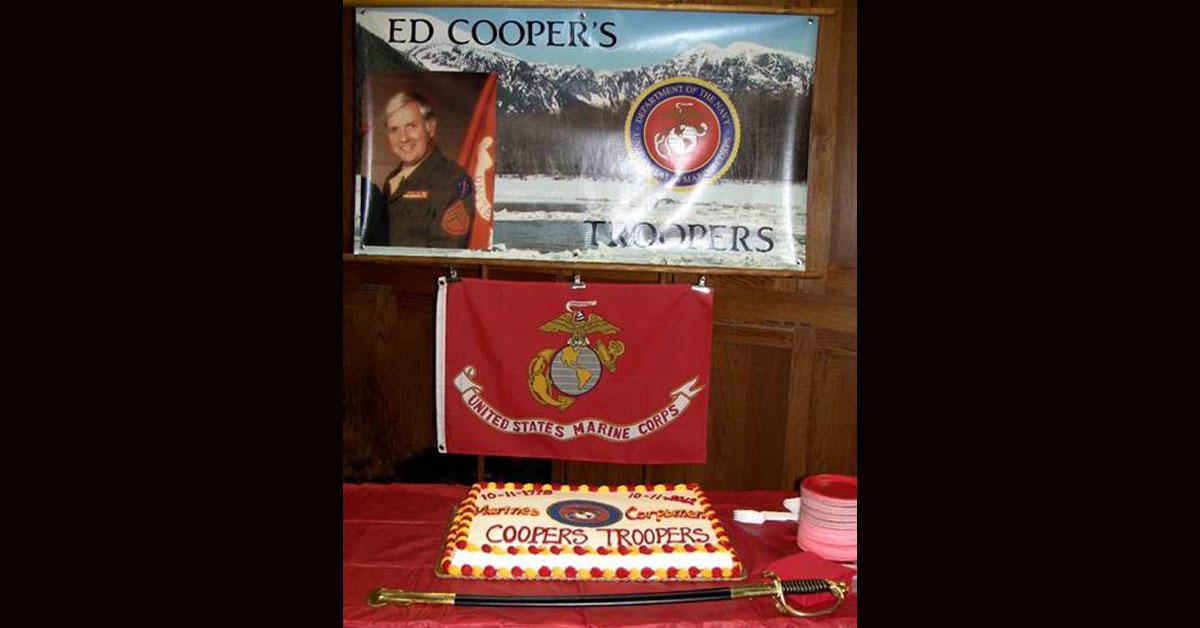
Ed Cooper
Robert Emmett Murphy Robert E Murphy, 91, of Northglenn CO passed away on April 4, 2023. Robert (Bob) was born on August 26, 1931 to
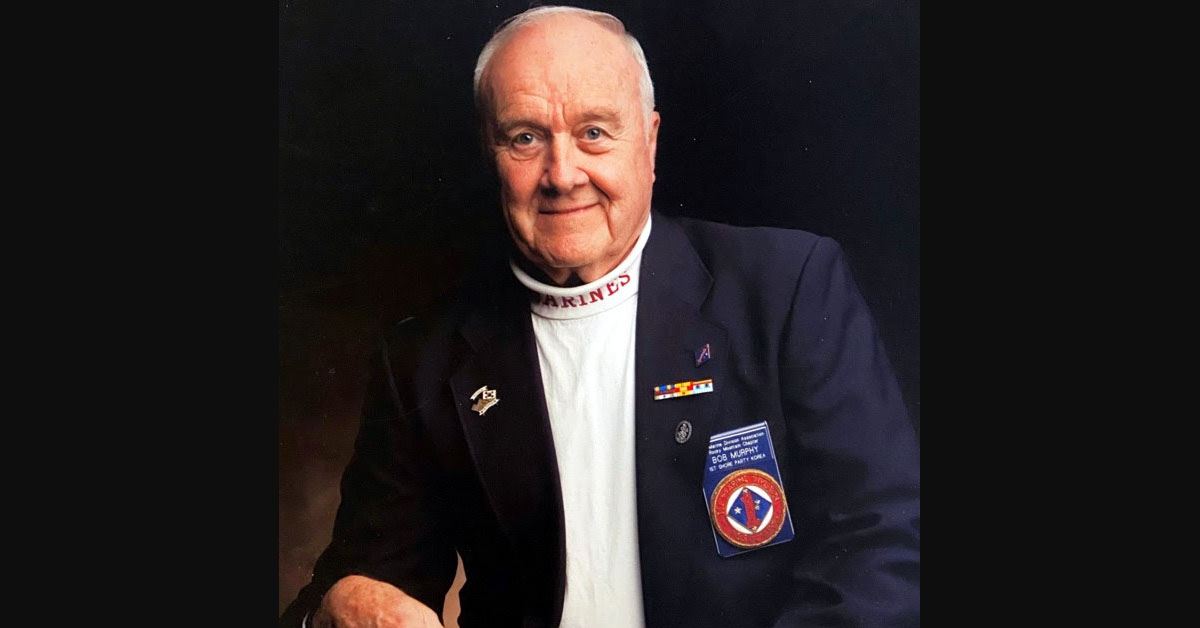
Robert Emmett Murphy
Robert Emmett Murphy Robert E Murphy, 91, of Northglenn CO passed away on April 4, 2023. Robert (Bob) was born on August 26, 1931 to
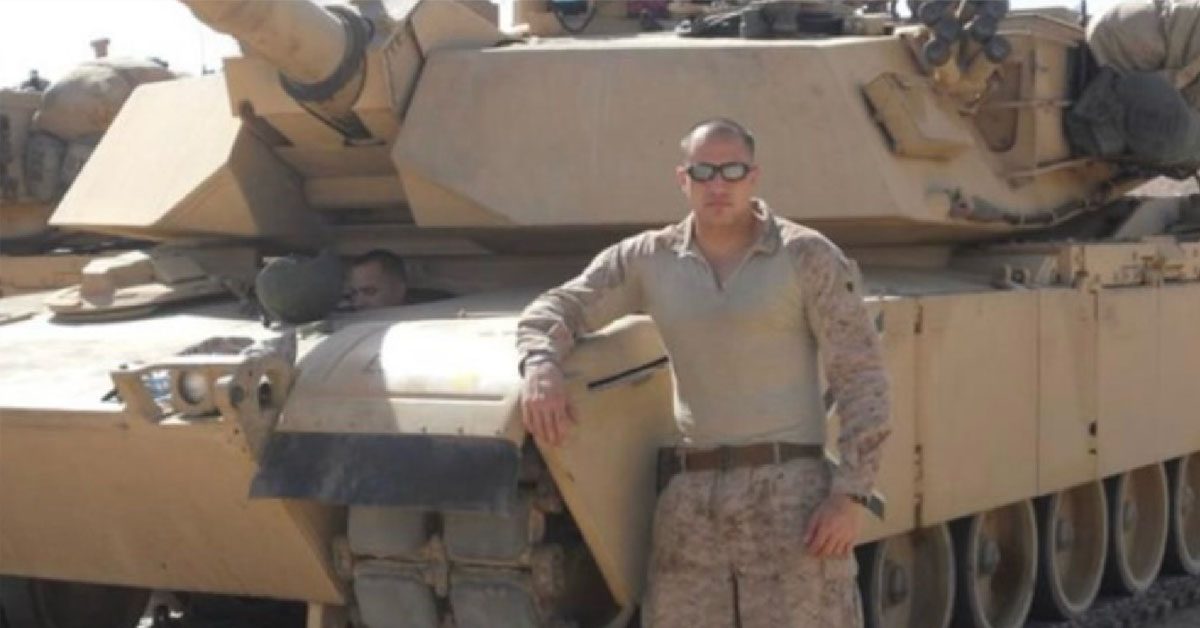
Mike Medina
Mike Medina, Tank Commander Michael Medina was born in California and relocated to Houston, Texas. After completing recruit training at Marine Corps Recruit Depot San
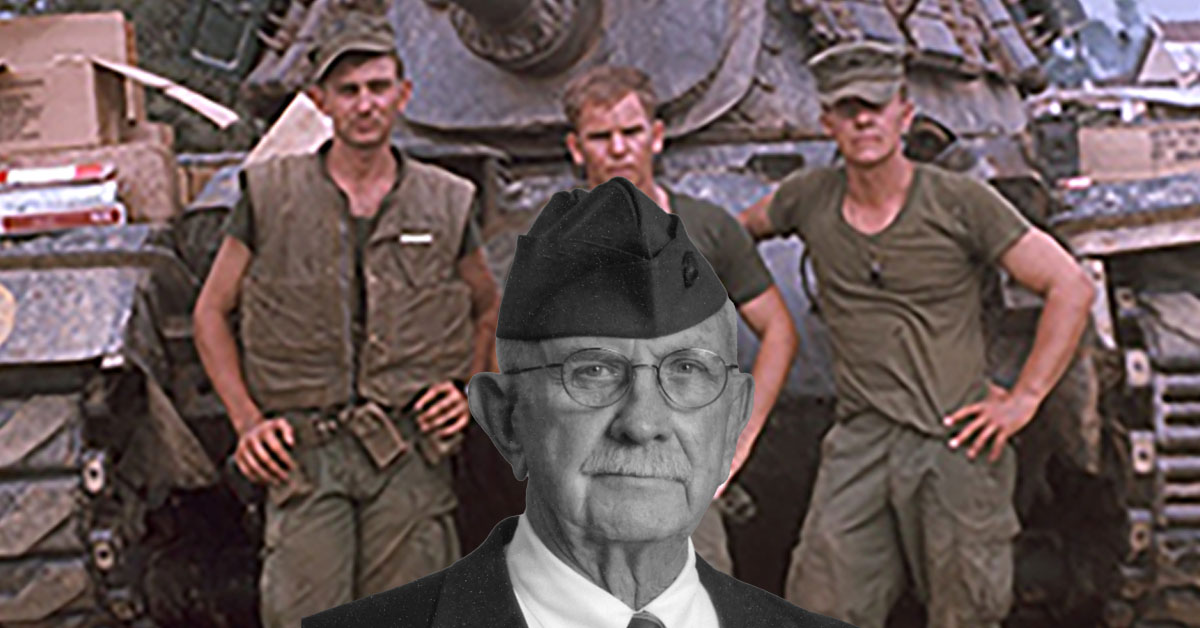
Grady T. Birdsong, Corporal USMC Vietnam 1968 – 1969
Grady T. Birdsong, Corporal USMC Vietnam 1968 – 1969 Family & Growing Up My dear grandmother related many family stories to us when I was
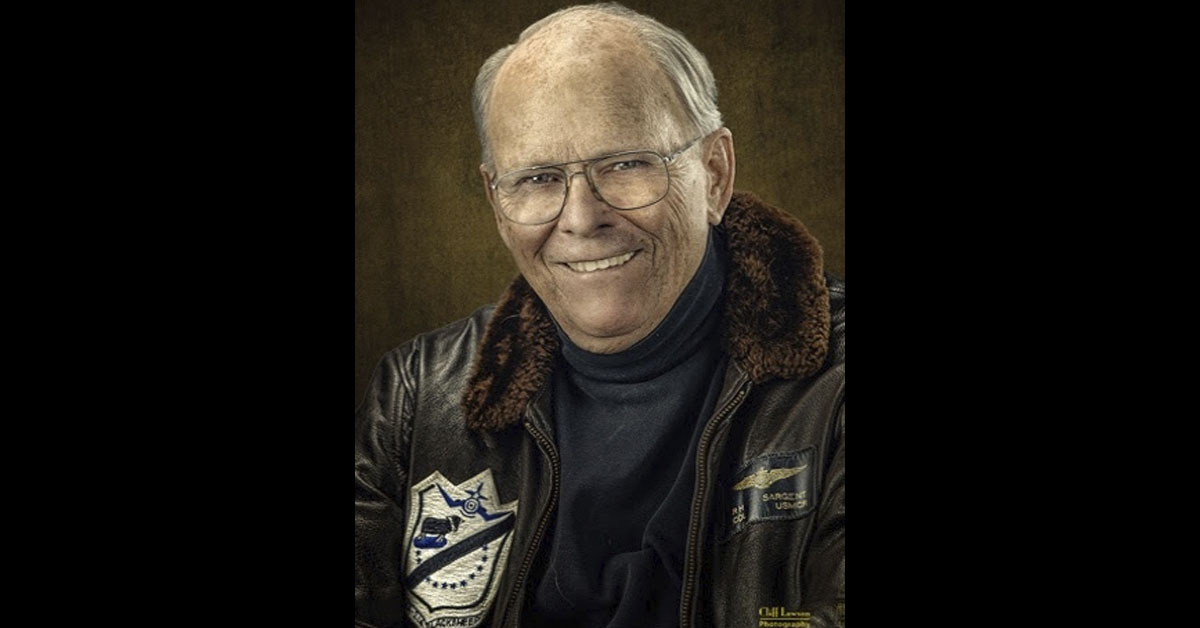
A Fitting Sendoff for a Beloved Man: Col. Richard H. Sargent
A Fitting Sendoff for a Beloved Man: Col. Richard H. Sargent A little over a month ago, on July 14, surrounded by friends, Colonel Dick
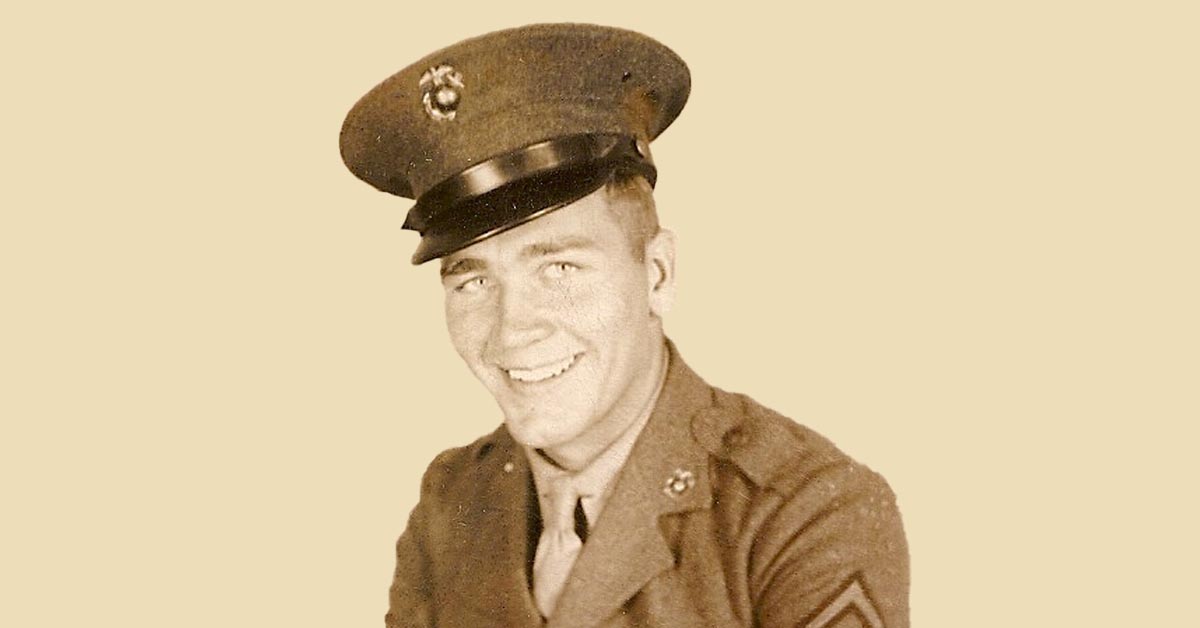
Max Brown, Part 3
Max Brown, WWII Marine (Part 3) Max Brown, in uniform. Max found his college sweetheart, Shirley, and they married on Flag Day, 1946! When I
Support the USMC Memorial Remodel
The USMC Memorial is dedicated to the memory and service of all Marines, as well as other service members.
Use the links below to buy a brick in one of the Memorial’s five walkways or to donate. All proceeds go towards the Memorial remodel.

